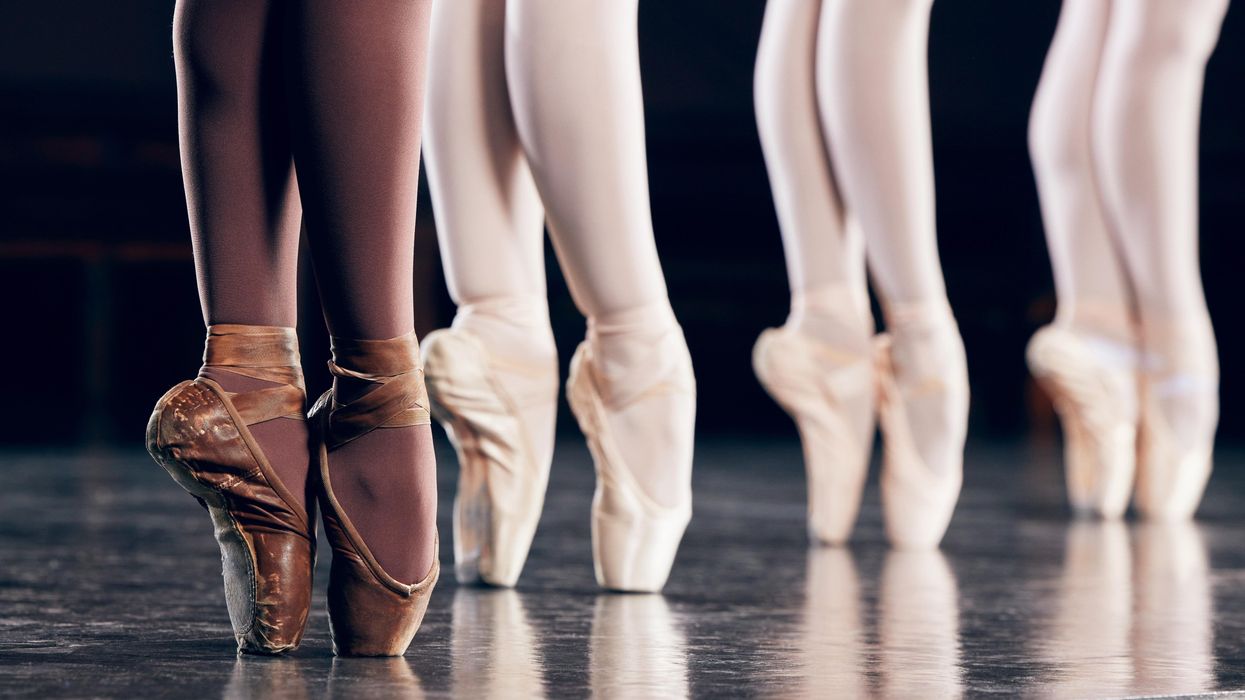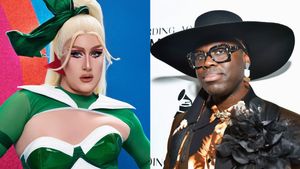(CNN) — Although Robin Williams has been a ballet dancer for more than 60 years, she experienced a first during her performance of The Nutcracker this December.
Williams said when she danced the Dance of the Sugar Plum Fairy, it was the first time she didn’t have to slather pink pointe shoes in paint or foundation to get them to match her brown skin.
The practice, known in the dance community as “pancaking,” has become a painstaking ritual for dancers of color because traditional ballet attire is designed to match fair complexions.
Although ballet has diversified and changed over the decades, many ballerinas of color still struggle to find pointe shoes and tights to match their complexion.
Williams said last month marked the first time in six decades of dancing she was able to purchase brown pointe shoes – complete with dyed ribbons and elastics – to match her complexion.
Williams said she couldn’t imagine purchasing brown pointe shoes when she began her career in the 1960s because she was the only Black ballerina in her company.
“We weren’t accepted in ballet classes and there were few choreographers,” she said, adding while her very presence stood out, so did her attire.
“My teacher happened to mention that we had on pink tights because the tights, and the shoes, were supposed to match our skin tone,” Williams recalled. “I thought about it when she said that because I was like, ‘Well our skin isn’t pink.’ And I never forgot that.”
In ballet, the pointe shoes are supposed to be an extension of the dancer’s lines, or the illusion of length running from their head to their toes.
On Black skin, the traditional European pink pointe shoes break those lines at the ankle, creating disharmony when the intended effect is grace. Ballet is also traditionally uniform, which has led some company directors to make dancers of color wear pink tights to blend in with the predominantly White company.
Although some dancewear brands began selling ranges of shades of pointe shoes in 2020, many ballerinas of color still “pancake” their shoes.
In a recent TikTok that received over 1 million likes, Misty Copeland, the first Black female principal dancer at the American Ballet Theatre, showed how she pancaked a pair of baby pink pointe shoes with a sponge and a bottle of drugstore foundation.
Despite her fame, Copeland explained that the lack of ballet shoes matching her skin tone has made her feel excluded.
In September, she started a petition called, “Let’s Make a Pointe!” to encourage Apple to provide different shades of its pointe shoe emoji, writing that the lack of shade matching in the emoji – and in real life – was a “constant reminder of the subtle ways dancers of color have not been included.”
Cortney Taylor Key, a Black ballerina and teacher at the Misty Copeland Foundation told CNN she studied ballet at the University of North Carolina School of the Arts and danced in pink tights.
“I hadn’t woken up yet,” Taylor Key said. “It wasn’t until I graduated that I even had ventured to New York and got to see the Dance Theatre of Harlem and I saw [flesh-toned tights] and understood.”
The Dance Theatre of Harlem, known as the first Black classical ballet company, first debuted flesh-toned tights in 1974 under the direction of the company’s founder, Arthur Mitchell.
“There’s no amount of money that would make me disrespect Arthur Mitchell” by wearing pink tights, Taylor Key said. “If it was up to me, I’d burn every pair of pink tights I could, because European pink is a tradition, and it can change.”
Taylor Key said she appreciates the new choices in shades for pointe shoes and dancewear that some companies have made available, but to get a better match to her own skin tone, she still pancakes her shoes.
“I learned pancaking from my DTH sisters at Harlem, where I’m from, and really for me it was a rite of passage, but I understand that it is also equally frustrating … to have to do it, it’s tedious,” she said.
The process can take several hours, and the cost of supplies adds up. Pointe shoes, which generally cost upwards of $100, only last for about 10 hours of dancing, Taylor Key said. The makeup makes the shoes die, or wear down, faster, she added.
Because of the cost of modifying the shoes, Taylor Key said she spent much of her early career dancing on “dead shoes,” hindering her performance.
However, she acknowledged, the field has made strides, even if the shades available are lacking in options.
Taylor Key said Copeland’s petition is “incredibly and extremely necessary.”
“It sucks that nobody came before her, but she’s definitely deserving and what she’s doing for the community right now … I couldn’t be more proud to be working for her organization,” she said.
The-CNN-Wire
™ & © 2023 Cable News Network, Inc., a Warner Bros. Discovery Company. All rights reserved.
Advocating for ballet and all its beauty

Video Source: Advocate Channel
- Big Brother Winner Taylor Hale Gets Candid About Microaggressions and Confidence in Women ›
- 'Ebony Alert' System Enacted in California to Find Missing Black Women and Children ›
- Why Black Women Should Get Screened For Breast Cancer 8 Years Earlier ›
- Black Women Are at Risk From Toxic Substances in Beauty Products ›


















































